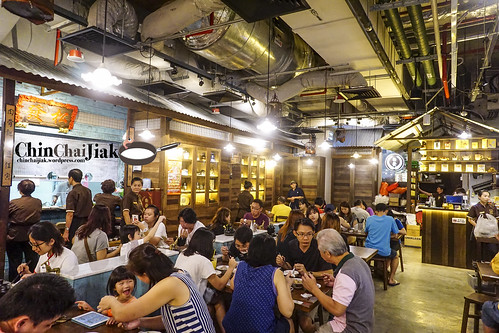One of the unique features of Singaporean culture is its food heritage which began with itinerant hawkers peddling on the streets. With the erection of hawker centres, Singaporeans found their favourite foods like char kway teow, laksa, mee siam and roti prata prepared behind more hygienic stalls which were leased from the government at cheap rentals. And the majority of Singaporeans take their daily three meals at these hawker centres which offer a great variety of affordable local food options.
Unfortunately, stall rentals escalated after the government's economic policies went on high gear. The National Environment Agency ("NEA"), which currently manages 107 markets and hawker centres, began selling the stalls in 1994 with takeover fees that ran into hundreds of thousands of dollars. About 2,000 stalls in 15 centres were sold in four phases between 1994 and 1997, and their leases were slated to expire between 2014 and 2017 (Click HERE) .These stalls were sold at between S$26,000 to S$ 141,000 each, depending on their location and size and owners re-sold and pocketed huge profits only to buy more stalls when they were allowed to sublet their stalls. The costs of running a hawker stall invariably shot up. So did food prices at these hawker centres.
Rental costs escalated even further for food stalls when the government stopped building hawker centres for some 26 years while air-conditioned food centres in shopping malls sprouted up like mushrooms. The impact on food prices was significant and families on tight budgets had to forgo at least one meal. Many Singaporeans eat out at coffee-shops too. These are located in housing estates and are the regular venues for many family dinners. With liberal policies on coffee-shop ownership (which attracted foreign investors looking for capital gains) and higher and higher tender prices for coffee-shops in new housing estates, stall rentals in coffee-shops shot up as well. High turnover of business owners in coffee-shops are now a regular feature and the quality of food has suffered. Old food stalls with huge followings and customers who grew up on their menu begin to close down one after another.
After GE 2011, the government announced in October 2011 that it will restart the programme of building of hawker centres after 26 years with a new policy direction (Click HERE). There will be 10 new hawker centres to be built over 10 years. These new hawker centres are to be run on not-for-profit basis instead of by commercial operators. This was a tacit acknowledgment that food prices in our iconic hawker centres have gone up too high. The first of these new hawker centres is now operated by NTUC Foodfare in Bukit Panjang with 28 cooked-food stalls offering at least two low-cost main dishes.This new policy direction in letting only social enterprises and co-operatives manage hawker centre has already led to disgruntled hawkers who were unhappy with the price-caps on the food they sell and that the centres are operated more like food courts which require them to pay plate collection and dishwashing collection and dishwashing fees, use common utensils and wear uniforms (Click HERE).
The idea of bringing down food prices in hawker centre is applaudable but the new management model of hawker centres looks set to have another negative impact on our heritage food culture as hawkers think of ways to cut costs. Why can't we go back to the old model of leasing out hawker stalls at low monthly rentals with a government agency managing the hawker centres? Such a model was working perfectly fine until they started to tinker with it. As they say, if it ain't broken, why fix it?
